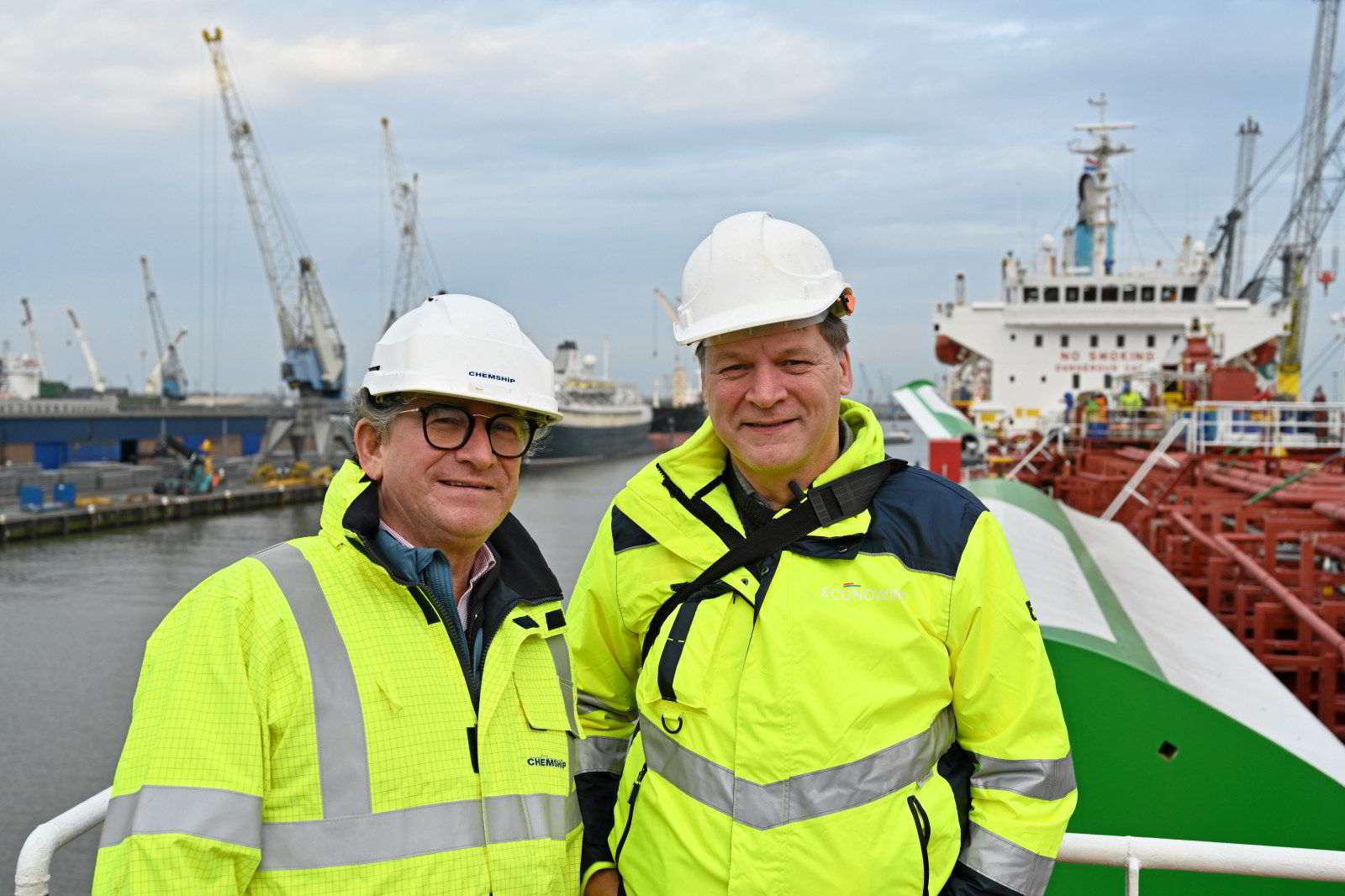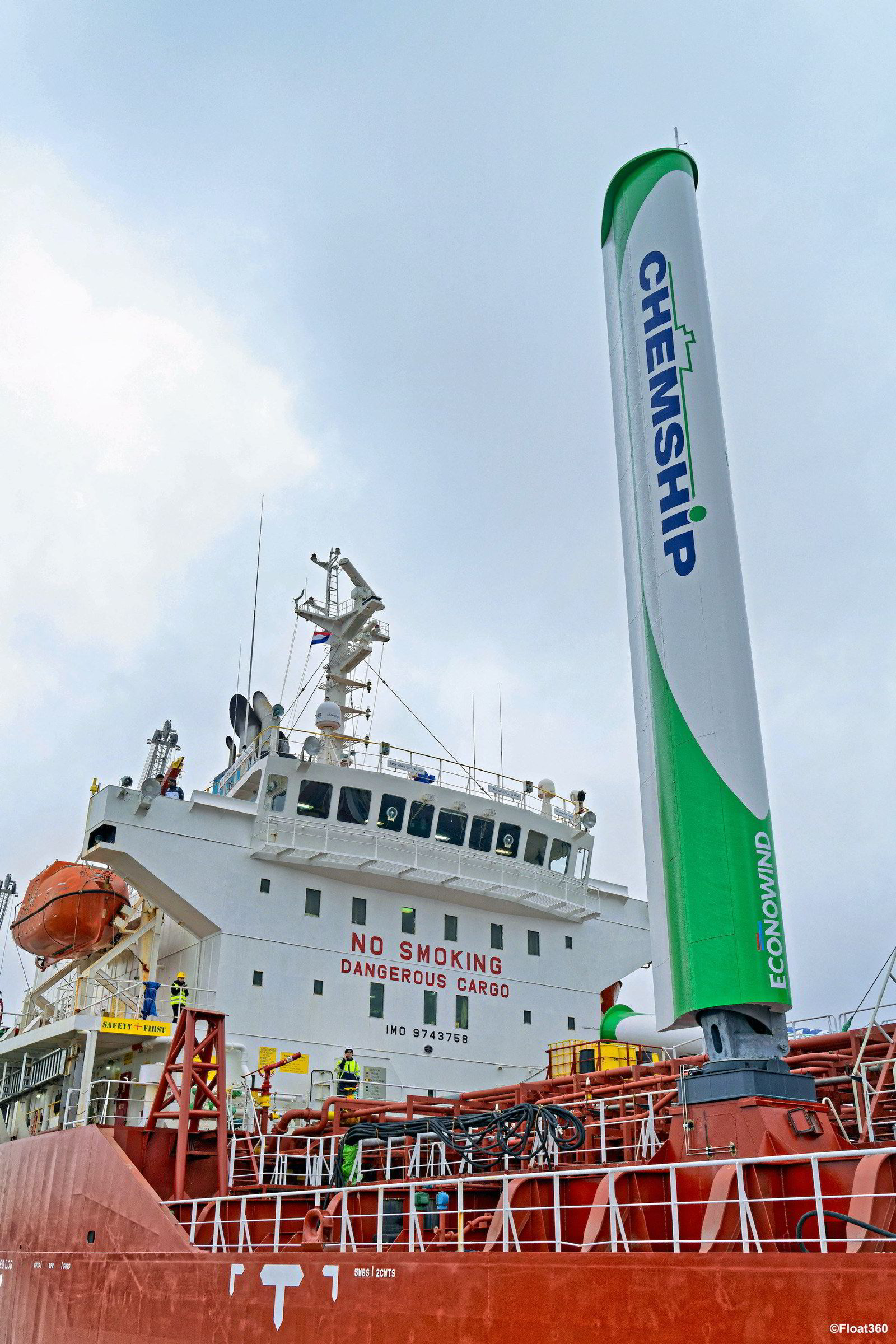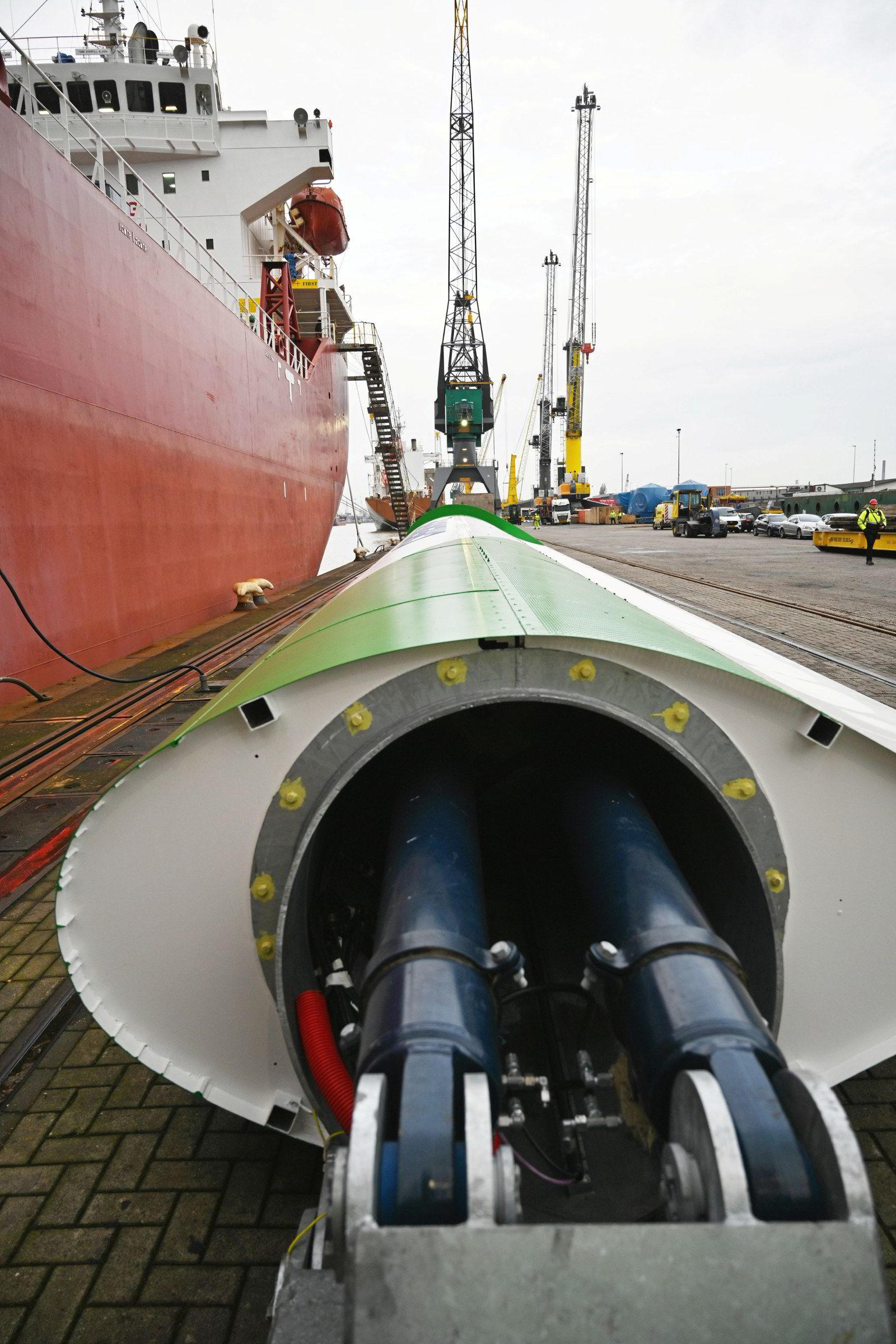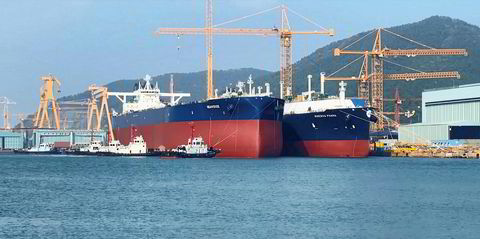It is a nervous yet exciting day for Chemship chief executive Niels Grotz on board the 16,111-dwt Chemical Challenger (built 2015) at a quiet berth in Rotterdam.
Polish and Dutch engineering teams work around the deck trying to make sure everything is ready for the chemical tanker to become the first worldwide to be fitted with four emission-busting suction sails.
Grotz, a former seafarer who worked many years on chemical tankers, explained during an interview on board: “We started this journey already three years ago when I looked at ways we can reduce the CO2 output on a vessel.
“I thought, well, we have a young fleet, so we can benefit from new engines and a good ship, so what else can we do?”
For any seafarer, new equipment on a ship is a worry. Will it survive a storm? Will it work? How much extra work will it be to maintain? But it is also exciting. Something new. Something different.
Grotz points to the support stanchions of the sail systems when they are lowered, worrying about how the serrated locking mechanism will work in a storm, and he gestures to the vessel’s foremast, where a new radar antenna has been installed under a class requirement. It is in case the four sail systems create a blind spot with the radars on the vessel’s main mast.
Yet into this muddle, the company has been able to install the four steel pedestals on which will sit a suction sail from fellow Dutch firm Econowind.
It is the culmination of three years of work to get the financing, the backing of the board and class approval from Class NK.
Being a first on a chemical tanker, the whole system has had to be classed as fit for an explosive space, a requisite for any deck equipment on tankers or vessels carrying explosive cargoes.

Three years ago, Grotz started his journey by looking for young companies with ideas that would help him. He met Frank Nieuwenhuis, the chief executive of Econowind, the maker of the four sail systems that are being installed.
Not looking at the money
“He started to tell me about the sails. Being an avid sailor myself I fell in love with the idea, and that is really how it started.”
Grotz admits it has taken longer to get to the point where the four sails are finally installed, but he does not regret it.
“I think we have achieved what we wanted to achieve,” he said.

“The work has been tremendous. The ship has been in a shipyard in Bulgaria to do the pre-work, but I think it’s worth every penny because I’m not looking at the money really, I’m looking at the CO2 reduction.”
The majority of the Chemship fleet is on bareboat charters from the large Japanese shipping families.
The Chemical Challenger is one of four vessels on Chemship’s books that it owns directly, in this case since 2022.
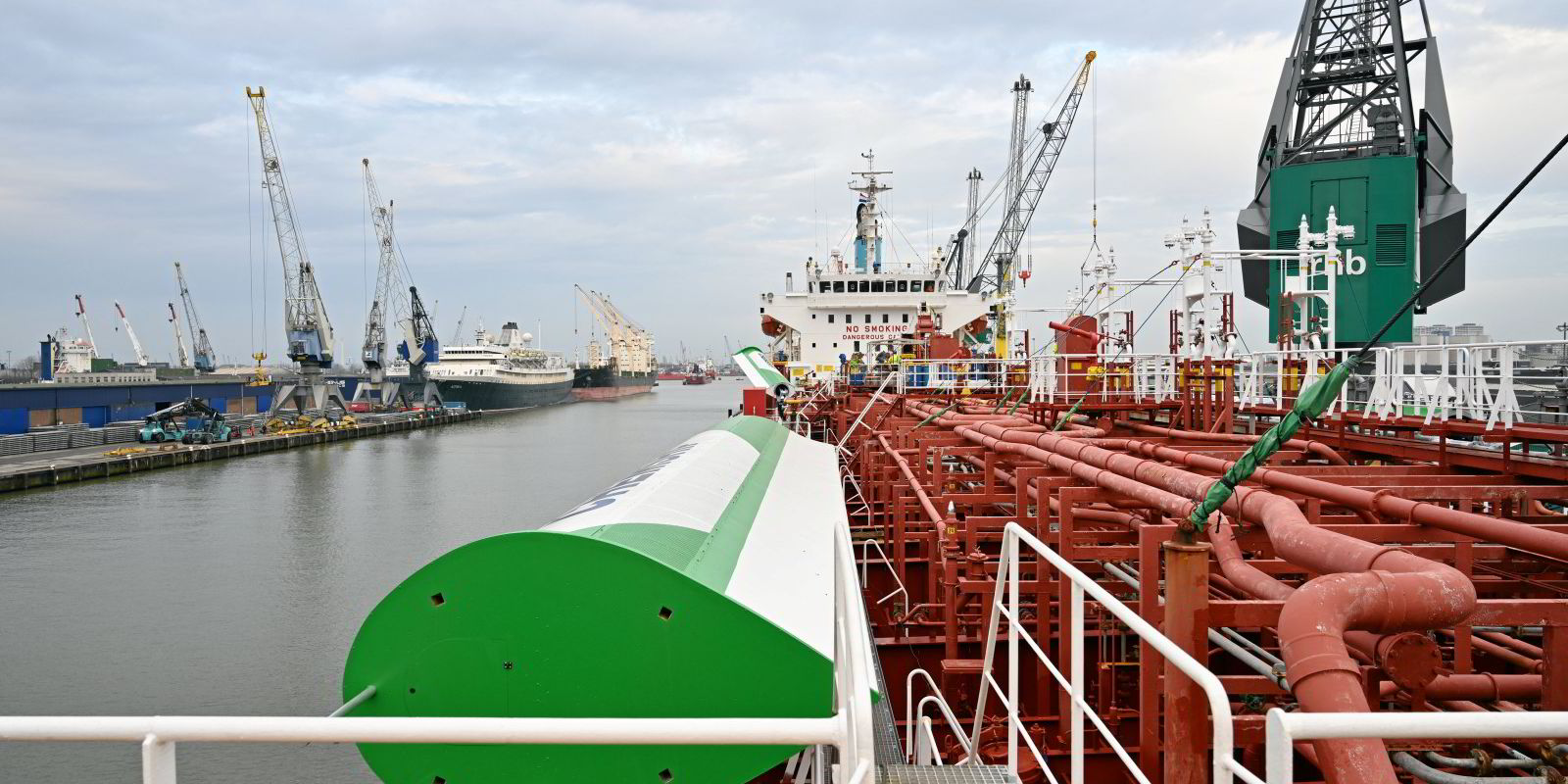
The sails are not the only fuel-saving investment Grotz has brought on board.
Grotz points to a large wooden crate on the deck with a new propeller boss cap fin from Mitsubishi. It will be fitted onto the vessel’s propeller later in the afternoon once the final sail is on board.
The Chemical Challenger has also been trialling a new lubrication oil made by another Dutch start-up, which Grotz said has proven itself on the vessel’s auxiliary four-stroke Yanmar engines and will now be trialled on a MAN two-stroke engine.
Shipping’s evolution
The final fuel-saving and emissions-reducing measure the Chemical Challenger has applied is a new graphite-based hull coating, which Grotz also said has been worth the investment.
But the four green and white sails sticking 16 metres into the sky and contrasting with the vessel’s orange hull and bright blue funnel are by far the most striking of Grotz’s decisions.
“Shipping is evolving all the time, and having the sails on board will show the industry that it is possible to use wind again,” he said.
“And the routes Chemship sails on include a lot of old ports, ports like Istanbul, Genoa, Naples, all two and a half thousand-year-old ports and it will be amazing when a ship sails into a port like that.”

